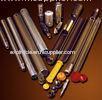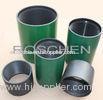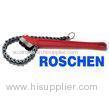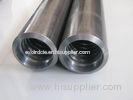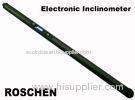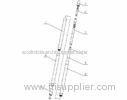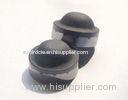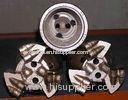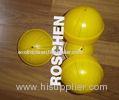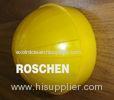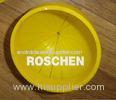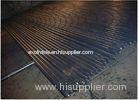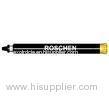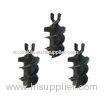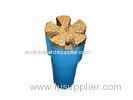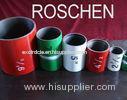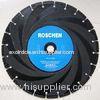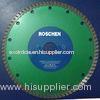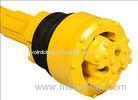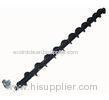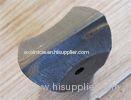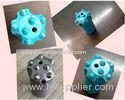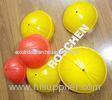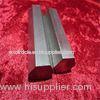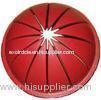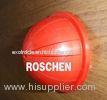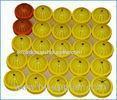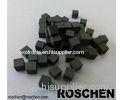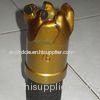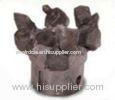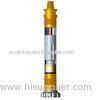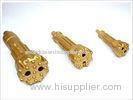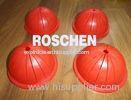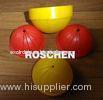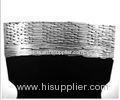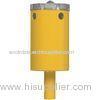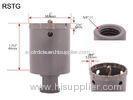|
ROSCHEN
|
Overburden Drill Bit overburden drilling system 70mm - 400mm OD
| Place of Origin: | Zhejiang, China (Mainland) |
|
|
|
| Add to My Favorites | |
| HiSupplier Escrow |
Product Detail
Overburden Drill Bit overburden drilling system 70mm - 400mm OD
Details Des
Overburden Drill Bit overburden drilling system 70mm - 400mm OD
Details Description:
The Stratex Drill System
The Stratex Drill System (SDS) is an overburden drilling system designed for conditions where a cased hole is required. Collapsing holes tend to make overburden drilling expensive, with lost drilling equipment and down time.
In cooperation with drillers and drilling contractors, the SDS was developed to overcome these problems. The patented eccentric design and the Drop Off Ring (DOR) drill bits enable the drill string and casing to be lowered in the hole simultaneously with a conventional hammer drilling system.
The SDS eccentric designed bit rotates outward and drills a larger diameter hole than the casing, avoiding cave-ins, wash-outs, and other problems common in normal drilling operations in soft and gravel-type strata or loose rock. Since 90% of the world's overburden drilling is in loose strata, potential utilization of the SDS is enormous.
After reaching the designated depth, the SDS reamer-bit is retracted by reversing the direction of the rotation and by applying tension on the reamer-bit, which has a taper and will retract into the casing for easy removal of the entire drill-string. This leaves the casing in place for other applications or for removal at a later date. The SDS method is designed for use with flush joint threaded pipe or welded-type casing and provides a bit size for a wide variety of different casing wall thicknesses.
Advantages of SDS:
Low capital investment
High drilling performance
No rotation of the casing
Compatible with most drilling rigs
Virtually no casing stress
Casing is simultaneously lowered by the guide device and to deeper depths than other methods allow
Cost and on-site time reduced due to better penetration rates, easier bit changes, and stable hole conditions
Smaller pilot bit for faster and better penetration
Applications:
Blast holes
Water supply wells
Bridge and building foundations
Standard slant or horizontal drilling
Mining air holes
Environmental monitoring wells
Grouting operations
Seismic shot holes
Soil sample and geotechnical applications
Ground anomaly and tiebacks
Storage caverns and dam
Accessories Available with SDS:
Drop Off Ring (DOR)
Drill pipe and subs
Threaded casings
Casing drive shoes
Hydraulic casing pullers
Stabilizers
Discharge heads
Casing wing-nuts
Shock subs
Drill bits
Fishing tools
Air swivels
|
Overburden Drill System
Assembly of the Stratex System
The Stratex Drilling Method is used with air rotary drilling rigs and most manufacturers' downhole hammers. The drill rod is connected to the rig top drive using a changeover sub or swivel sub. The drill rod is then connected to the down-hole hammer by the same method. The chuck nut and split rings are removed to insert the guide device shank and secured by replacing the split rings and chuck nut. The reamer bit, in the closed position, is now inserted into the casing shoe. Since the percussion hammer is at the bottom of the hole, working directly above the drill bit, the force to pull down the casing tube is transferred by way of the casing shoe. The exhaust air from the drill redirects the loose cuttings up through the groves on the guide device, forcing them up between the drill rod and the casing wall out through the discharge head, which is attached to the casing tube. By using a discharge head, drilling is not only safer but also environmentally cleaner. Stratex can be used with foam or water to aid in cutting removal.
Good Flushing
Good Flushing is essential with any successful drilling operation or in using an overburden drilling system. The Stratex System provides air jets above and below the guide device, creating a vacuum across the face of the reamer bit, removing the cuttings with greater annular velocity. The gauge carbides along the side of the pilot and reamer bit act to crush the cuttings into finer particles, the majority of which are removed from the hole. The remaining cuttings are forced back into the walls of the cavity, leaving less material to be extracted from the hole. |
|
|
|
Advantages:
|
|
Air velocity is important for efficient hole cleaning. A minimum return air velocity of 4000 feet per minute is desirable. Annular space between drill pipe and the drilled hole as well as compressor capacity determines the air velocity. The annular air velocity in foot per minute can be calculated with the following formula if air consumption and annular area are known:
|
annular air velocity (fpm) = |
free air consumed (cfm) x 144 |
|
|
annular area (sq. in.)* |
*annular area = .7854 x (hole diameter - drill pipe OD)
The following flushing mediums are also useful:
- Air with water injection
- Air with foam injection
NOTE: Foam has the ability to lift cuttings and stabilizes the wall of the hole and provides lubrication for easier casing penetration. Foam also has good drilling performance in most types of clay.
The Stratex Drill System
|
Drilling Rod
|
Wiper Cover Discharge Body Discharge Clamp Blank Casing End Adapter Clamp Replaceable Grippers Pin End Box End Casing Hammer Shank Guide Device Casing Shoe Reamer Bit |
The Stratex System utilizes a one-piece reamer and pilot bit that moves outward to full open position on an eccentric shaft by rotating a half turn to the right. This reamer pilot bit system opens a larger diameter hole than the diameter of the casing. The casing is simultaneously lowered into the hole as the reamer pilot bit drills. The pilot bit is rotated at 10 to 40 rpm while drilling with the hammer. When the designated drilling depth is reached, the reamer pilot bit system is retracted into the casing by applying slight tension and reversing the direction of the drilling rotation. The design of the reamer pilot bit system incorporates a closed bearing method that makes the loss of the pilot bit virtually impossible. This bit system, in the closed position, is easily removed through the casing shoe and casing. |
||








